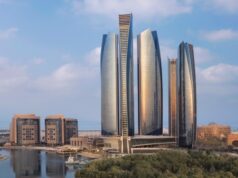 DENVER—Xanterra Parks & Resorts has completed its fourth Environmental Sustainability Report detailing both its environmental challenges and accomplishments. The report also outlines the company’s future goals for serving its clients while providing high-quality services to visitors of its properties in the most sustainable ways possible.
DENVER—Xanterra Parks & Resorts has completed its fourth Environmental Sustainability Report detailing both its environmental challenges and accomplishments. The report also outlines the company’s future goals for serving its clients while providing high-quality services to visitors of its properties in the most sustainable ways possible.
The report, which follows the Global Reporting Initiative (GRI)’s reporting guidelines to the extent possible, is a comprehensive, 52-page publication detailing the company’s environmental initiatives across all the properties and their related operations. GRI is a network-based organization that pioneered the world’s most widely used sustainability reporting framework.
The company’s award-winning environmental program, Ecologix, was developed by Xanterra to articulate the company’s vision for reducing its environmental impact with genuinely sustainable practices affecting energy usage, carbon emissions, waste, building design, sustainable cuisine, transportation and water, among other areas. Xanterra uses its own highly refined environmental performance monitoring system, called “Ecometrix,” to define the company’s total annual absolute resource consumption, as well as the company’s “ecometabolism.” Xanterra’s ecometabolism is a measure of resource usage per-room night and per-dollar of revenue. These are some of the tourism industry’s first accurate and measureable environmental performance metrics that define overall impact per unit of product (tourist-related activities).
“The sheer numbers of rooms, restaurants, retail stores, activities and vehicles operated by Xanterra create plenty of opportunities to reduce the company’s environmental impact and carbon footprint,” said Chris Lane, vice president of environmental affairs for Xanterra Parks & Resorts. “Now that we have a mature environmental management system coupled with sophisticated tracking systems covering 10 years of data in our fourth edition report, we have a much clearer picture than ever of our challenges for 2015 and beyond. Whether one believes that global warming is occurring or not, these practices and programs are genuinely reducing our company’s use of natural resources.”
Examples of Xanterra Accomplishments
Xanterra operates 31 hotels or lodges in 21 locations, 5,300 guestrooms, 1,700 campsites, 486 RV sites, 52 retail stores and 68 restaurants as well as five marinas with 561 boat slips, nine golf courses and four horse stables. Examples of Xanterra accomplishments outlined in the report include:
• Installing a 1.23 MW solar photovoltaic (PV) system in California’s Death Valley. The system generates more than 35 percent of Furnace Creek Resort’s annual power needs.
• Developing a green retail store in Yellowstone National Park that fully ranks the sustainable attributes of all products offered in the store, while interpreting the effect of climate change on national parks.
• Running diesel-powered steam locomotives at Grand Canyon Railway on 100 percent clean-burning waste vegetable oil—utilizing a by-product that previously was disposed as waste from Xanterra’s nearby Grand Canyon operations.
• Instituting the National Park system’s first ban on the sale of all bottled water at Zion Lodge in Utah’s Zion National Park and installing hydration stations for guests to refill reusable bottles.
• Replacing all in-room amenities (soaps, lotions and shampoos) that formerly were in plastic bottles with containers made of biodegradable corn starch.
• Installing the company’s first wind turbine that will generate 17,000 kWh of clean and renewable energy at Maumee Bay State Park Lodge.
• Implementing local vegetable gardens on site to serve organically grown produce to employees.
In 2003, Xanterra developed a set of far-reaching environmental goals it hoped to accomplish by the year 2015. Among those goals, Xanterra committed to do its part to slow global warming, preserve natural resources, minimize hazardous substances and protect the natural environment. More specifically, the goals—based upon the baseline year of 2000, unless otherwise noted—are to decrease fossil fuel usage by 30 percent, increase usage of renewable energy to provide seven percent of total electricity consumed, decrease greenhouse gas (CO2) emissions by 30 percent, divert from landfill 50 percent of all solid waste generated, increase purchases of sustainable food items to 50 percent of all company-wide food expenditures, achieve company-wide CAFE (corporate average fuel economy) standard of 35 miles per gallon (EPA rated combined city and highway) for all passenger vehicles (under 10 persons) purchased annually, generate zero hazardous waste and decrease water usage by 25 percent (baseline year 2003). Many of these goals have already been achieved or are near completion.
Click here to access the Environmental Sustainability Report. The report is also available in Xanterra’s lodge and hotel rooms.







